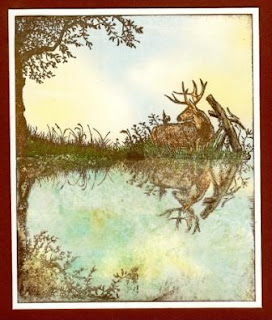Although everyone enjoys receiving money, checks or gift cards, the
store offered money enclosure cards leaves a lot to be desired. To address this a few years ago I created my own wallet (money holder) cards.
These can be made for men, women and kids depending on the
papers, embellishments and color schemes used. The technique is fairly simple and the best
template is your own wallet (or someone’s close to you). Here are examples of a man's and woman's wallet.
Man’s style wallet card:
For the exterior I started with a simple bi-fold black 4 1/4" x 5 1/2" card. I embossed two pieces of black paper with an alligator print pattern, cut them
to size and adhered them to exterior of card. Next I cut out a ½”
x 1” piece of gold paper, attached it to lower right corner of the front panel
and added small sticker letters to create the recipient’s initials.
For the
inside of the wallet cut a 2 ½” x 7 ½” piece of black paper, fold it up lengthwise
½” from the bottom and attach it across the top of the card (about two and half
inches down) to create a money pocket. Next, cut out two more panels from black
paper 3 ½” x 4” each. Turn one into a “driver’s license” holder by cutting it
out to create a frame to hold a piece of white paper for the message. Cut out a
slit 1/8” x 2 ½” about halfway down in the second panel to create a gift card
holder. Attach both panels to the inside of the wallet covering the lower
portion of the money pocket. Another little gold tag can be added for more
initials.
For the exterior I started with a tri-fold 4 1/4" x 5 1/2" card made from embossed football pattern 12” x 12” paper. Cut back the top layer to 1 ½” to create the
top flap of the wallet. For this wallet I edged the top flap with a die-cut
border that I mounted on gold paper first and then cut out. Women like "bling" so I added four rhinestones. To
keep the wallet closed use two small pieces of Velcro.
For the inside of the
wallet create two pockets from strips of paper for the money and gift card
pockets: the money pocket is a 2 ½” x 7 ½” piece paper, folded up lengthwise ½”
from the bottom, while the gift card pocket is a 1 ½” x 4 ½” piece paper also folded
up lengthwise ½” from the bottom. These are attached to the center portion of
the wallet. On the lower portion create a “driver’s license” holder section
lined with white paper for the message.
Both these cards
will hold standard US
currency, standard personal checks and standard sized gift cards. Although there is a lot of layout and cutting
involved, the end results are well worth it.
These are, of course, just two possibilities, I am sure you can all come
up with your own ideas and designs. Think of all the fun you can have for kids!
The nice thing about these wallet cards is they can be “re-gifted” by simply
taking out the white inset on the inside of the card and replacing it with a
new one (as well as the money, check or gift card of course!).







